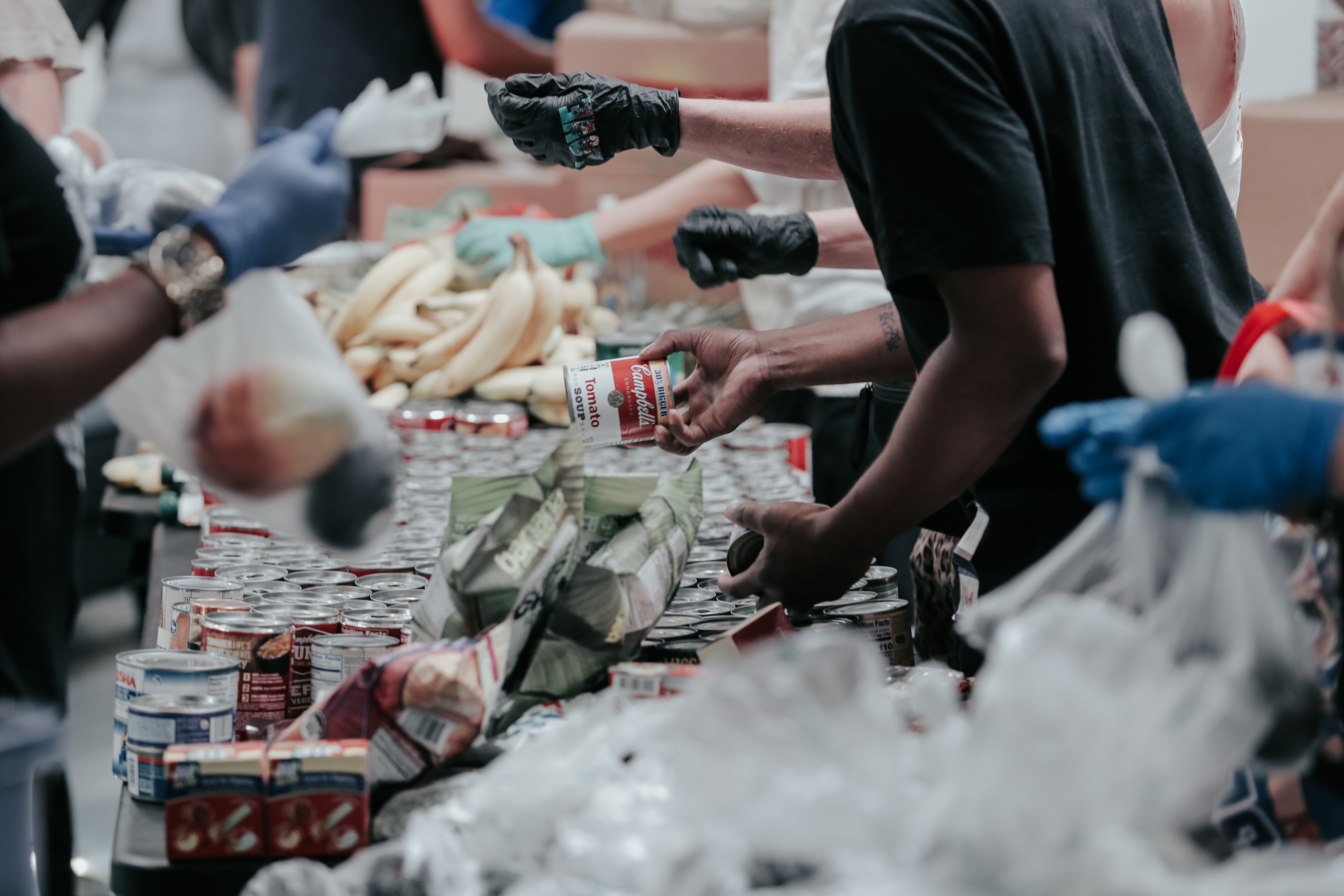A YEAR OF CRISIS FORCED FOUNDATIONS TO CHANGE BAD PRACTICES. THEY SHOULD NEVER RETURN TO THE OLD WAYS
Long before the pandemic hit, it was clear philanthropy needed an overhaul. But the health and economic crisis, combined with a national racial reckoning, forced grant makers’ hands. Foundations largely rose to the challenge by speeding up their grant making, increasing flexibility, and reducing funding restrictions.
But now it appears those changes may be short lived. In the most recent of its Foundations Respond to Crisis reports, the Center for Effective Philanthropy found that ‘most foundations do not plan to undertake these new practices in the future to the degree they are doing so now.’
How can that be during a time when people in and outside of philanthropy are speaking up every day about the need for such changes? Why wouldn’t foundations lean into this progress?
Because they are delusional — although not in the crazy sense. They are stuck in a mind-set I call ‘delusional altruism’, an almost-always unconscious state of being that leads them to hold on to deceptive and illogical behavior that undermines progress. These include a fixation on saving money, a belief that moving too quickly could send them down the wrong path, and a fear of losing control. To change, grant makers need to recognize the forms delusional altruism takes and then equip themselves to learn and chart new paths forward.
What follows is a roadmap for how to confront and overcome philanthropic delusions and permanently embrace the important changes made during a year of upheaval and crisis.
Delusion One: We need to save money so there’s more to give.
Foundation leaders and wealthy philanthropists operate under the assumption that their resources are scarce and that they need to save money to support the causes they care about. This scarcity mentality is one of the most destructive delusions in philanthropy because it results in a failure to make the investments grantees need to fulfill their missions and bring about long-term social change.
Such thinking hurts foundations and their grantees in big and small ways. For example, I spoke with several foundation leaders at the beginning of the pandemic who couldn’t get money to grantees because the checks were locked in offices that staff weren’t allowed to enter because of lockdowns. A lot of stress could have been avoided if they had simply invested in an online payment system. Similarly, many foundations quickly realized that their past hesitancy to provide general operating funds left grantees with little means of survival during the Covid-induced economic collapse. While many increased giving last year in response, the arbitrarily low limits on overhead funding unnecessarily threatened the survival of the nonprofits they supported.
The Solution: Embrace abundance
An abundance mind-set is a belief that the more you put into an organization, the greater the return. That means never skimping on such basics as a well-compensated and cared-for staff, up-to-date technology, and diverse and innovative leadership. It also means recognizing that thinking small won’t lead to significant social change.
The Libra Foundation demonstrated an abundance mind-set when it announced the Democracy Frontlines Fund last fall, which brought together a group of foundations to provide $36 million to Black activists working to end systemic racism. Libra acted big, noting that the fund ‘disrupts traditional grant making to Black communities by replacing short-term, administratively burdensome giving with sustaining, unrestricted, multiyear support.’ One grantee called it ‘a game changer’.
Delusion Two: Moving slowly produces better results.
Over time, philanthropic organizations have responded to a lack of government regulations on charitable giving by creating their own slow-moving and inefficient internal systems of accountability. This has evolved into laborious decision-making cycles, cumbersome grant-application processes, and extensive and lengthy information-gathering expeditions.
Grant makers believe, of course, that these steps will improve the impact of their investments. The reality is that they prevent the quick action needed when people’s lives and communities are at risk.
The Solution: Embrace speed
During the pandemic, foundations were forced to get out of their own way. Their communities and grantees needed help immediately. So, they stepped up in numerous ways, gathering far-flung decision makers on Zoom, throwing out pages of grantee-application requirements, or simply sending a check.
The pandemic proved that foundations could pick up the pace in significant and meaningful ways and increase their impact. They shouldn’t abandon those lessons now. Strategic planning, for example, doesn’t require months of meetings and multiple reports. The Burton D. Morgan Foundation in Hudson, Ohio, found that developing a strategy for one large piece of work, including clarifying goals, priorities, accountability, and next steps could be accomplished over four facilitated Zoom sessions of two hours each. That process might normally have taken months.
Grant makers can speed things up by making other small but significant changes. The Community Foundation Sonoma County, for instance, previously spent several days each week making dozens of grants, processing payments, and physically signing checks. This is now accomplished remotely in two hours. The David and Lucile Packard Foundation realized in 2020 that its $250,000 minimum wire threshold for U.S. grantees was causing unnecessary grant-payment delays. Its quick fix: eliminate the threshold to get money to grant recipients faster.
Delusion Three: If we let up on the controls, bad things will happen.
Philanthropists have a lot of power, and with power comes control. They get to choose which causes they support, whom they fund, and what they expect will happen with those funds. Foundation leaders also have a lot of fear. They fear they won’t be good stewards of the organization’s legacy, that they will spend money unwisely and fail.
This sets up a fear dynamic in which the grant maker fears losing control and so fails to trust its grantees. The nonprofits it supports are forced to operate within rigid grant requirements with little ability to spend money in ways that will result in innovative and lasting change.
The Solution: Embrace trust
The pandemic was like a giant ropes course where philanthropists had to cede control, try new things, and quickly throw money at extremely challenging problems. The result? Nothing terrible happened. In fact, lots of good came of it. So how do foundations hang on to this newfound bravery and avoid falling back into their fearful ways?
The antidote to fear is sharing power with a strong network of reliable people — and trusting that they know how to get the job done. In practice, this means actively listening to diverse perspectives, reducing grant restrictions, and providing general operating support. Sharing power allows organizations to adapt to shifts in need, respond to crises, take advantage of unforeseen opportunities, upgrade technology and other infrastructure, and support staff and leadership development.
The Tahoe Truckee Community Foundation in California had practiced elements of this trust-based philanthropy for more than a decade, including providing funds to strengthen organizations’ management as well as unrestricted support. When Covid-19 hit, it was in a good position to get money out the door within a few weeks, trusting grantees would know how to use it best. To date, the foundation has given $795,000 to 60 organizations through its emergency-response pandemic fund. No grant applications are required. Instead, foundation staff checks in with grantees one on one. Importantly, none of this has impeded the organization’s regular grant cycle and funding, which continues to move forward at a regular pace.
Tahoe Truckee was unknowingly readying itself for 2020’s challenges for some time. But for much of philanthropy, this past year was a crisis-filled, real-world training program. The obvious takeaways? Continual learning, flexibility, risk taking, and leading with trust and courage, among other things, need to become philanthropy’s default. The less obvious lesson? Grant makers need to recognize when delusional thinking stunts their organization’s potential and blocks the social change they want. Philanthropy needs to think of this past year as a test — one they can’t afford to fail now and in the postpandemic years ahead.

Kris Putnam-Walkerly is DDB's Expert International Philanthropy.
Read more articles and columns on Kris' DDB-Select Page: click here.
Follow Kris on Twitter or LinkedIn. Check out her website.
Kris Putnam is a global philanthropy expert, author of Delusional Altruism and was named one of America’s Top 25 Philanthropy Speakers.
This article was originally published in The Chronicle of Philanthropy

 nl
nl
